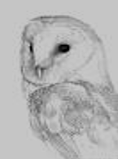The SOS Conservation team submitted a response to the Wealden District Council draft Local Plan last year, commenting on a number of proposed development sites. Of particular concern is the Owlsbury area, which extends westwards from the A22 as far as Newick. The entire site extends to 165 hectares and the developers will be seeking planning permission for 1700 houses on the majority of the area. This is significant in that it is the first major development on the west side of the A22 (Uckfield by-pass) and presents a real danger of encroachment into a rural and bird rich area.
Despite the relative lack of public access, our records suggest that the site meets one of the criteria for designation as a Local Wildlife Site in that it supports a significant number of breeding birds which are designated as being of conservation concern. In order to have sufficient data to present a convincing case to object to the proposals when a planning application is made, it would be extremely helpful if any members can provide details of sightings over the past ten years in squares TQ4519 and TQ4619 (we have access to records already submitted via BirdTrack and eBird). Records of scarcer and Red or Amber-listed species are especially valuable, with breeding information. There is some footpath access across the site.
Please report any data to conservation@sos.org.uk




